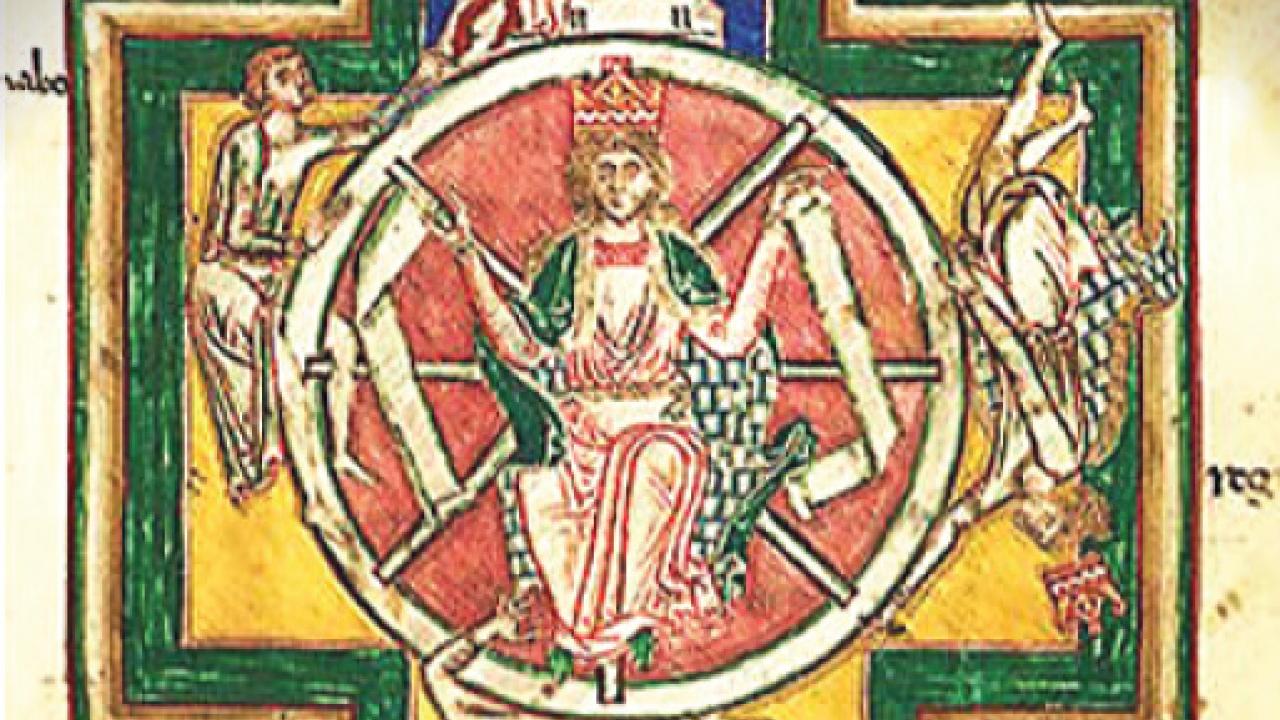
Harvard University Press Publishes Professor David Traill's Two-Volume Edition of the "Carmina Burana"
Professor Traill’s two-volume edition of the Carmina Burana has been published by Harvard University Press in the Dumbarton Oaks Medieval Library (DOML) series. Most classics majors are familiar with the Greek and Latin Loeb editions in the Classics library, with the ancient language and English translation on facing pages. The DOML editions of works in Medieval Latin are essentially similar but in a larger format and with considerably more in the way of commentary.
The Carmina Burana is the largest and most famous anthology of Medieval Latin poetry but is best known today for the music composed in the 1930s by Carl Orff for his Carmina Burana cantata. The music for O Fortuna, which opens and closes the cantata has in recent years been enormously popular, being used in fourteen films, many TV shows, and covered by over 50 bands and artists; see the Wikipedia article Carl Orff's O Fortuna in Popular Culture. Orff set to music excerpts from only about 20 of the more than 250 pieces found in the Carmina Burana. O Fortuna is found among the 55 “moral-satirical” poems. The largest section is devoted to love poems, of which there are over 130. These are followed by poems on tavern life (drinking, gaming and gambling), including the Archpoet’s tongue-in-cheek “Confession,” perhaps the best-loved Medieval Latin poem, and finally two religious plays. Most of the poems are anonymous but besides the Archpoet, who was probably of German origin, the leading Latin poets of the central Middle Ages, such as Walter of Châtillon, Peter of Blois, and Philip the Chancellor, all certainly of French origin, are well represented. Some of the love poems are rounded off by a German stanza of identical or very similar rhythmical pattern. Just why remains an unsolved mystery, though it certainly reflects the location of the scriptorium, where the anthology was compiled, written out by scribes, and illustrated by an artist, in a German-speaking area.
For a complete performance of Orff’s Carmina Burana, check out Carmina Burana on Youtube, where you will find that the performance by UCD’s orchestra and choir has the most-viewed performance with well over 17 million hits!
 |
A sample image taken from the manuscript of the Carmina Burana can be viewed to the left. To the right, a close-up of the image shows on the left, a man on his way up; at the top, the man is now king; on the right, the king is on his way down, and underneath, the man is crushed! In the center sits Lady Fortuna, with all our names and all our virtues and failings. |
 |
